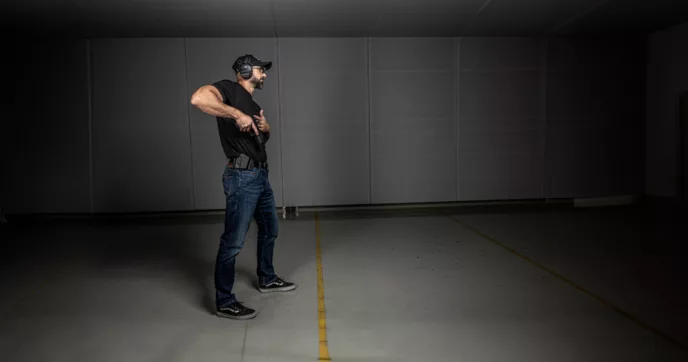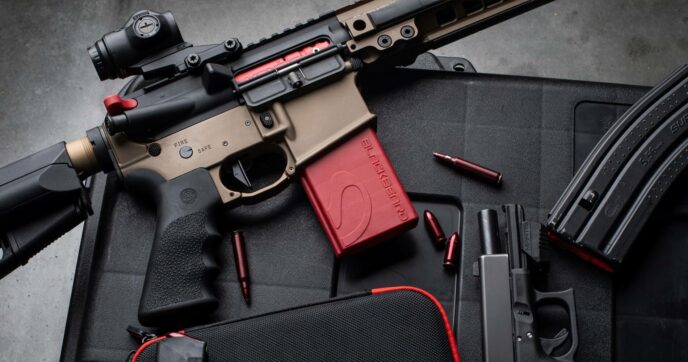With the cost of ammo rising and more and more practice being done at home, dry firing training has never been more important for a serious marksman. For that reason, we put together a buyer’s guide of gear to improve your training and shake up your dry fire regimen.
Why Dry Fire?
There are three reasons to choose dry fire training over live fire: it’s cheap, it’s easy, and sometimes, it works better than live fire.
Shooting guns is expensive, and lately, it seems like it’s getting more expensive by the day. Ammo manufacturers are dealing with increased material costs, and ranges are raising rates to accommodate the influx of new gun owners. By comparison, dry fire training is downright budget-friendly, even after accounting for some of the gear to help you make the most of it.
It’s also an awful lot easier than live fire practice. Most of us don’t have the means to go shooting every day; between the time spent packing up gear, driving to and from a range, and the actual practice itself, shooting can easily take up an hour or more of your day. A few dry fire reps, on the other hand, are easy to squeeze in before work or whenever you find yourself at home with five minutes to spare.
The biggest reason you should be doing dry fire practice, though, is to develop skills that live fire doesn’t build as efficiently. The best example of this is the flinch response; it’s hard to train your body not to react naturally to a loud, sudden noise, but by practicing without ammunition you can disassociate the action of pulling a trigger from the sound of the gunshot. Combined with muscle memory built from hundreds or thousands of repetitions, dry fire training is the fastest way to eliminate the tendency to flinch.
Shop All In Stock Hearing Protection Buy Now
It’s also great for isolating and improving specific facets of your shooting, like working on your trigger press. Dry fire eliminates the need to compensate for recoil or worry about reacquiring your sights, letting you focus on perfecting your trigger press. The same is true for working on other individual aspects like grip or sight alignment as well.
All these combined make dry fire training a fast, efficient way to build up skills and muscle memory. By training at home without ammunition, you can accomplish tens of thousands of reps for less than the cost of a case of ammo in a fraction of the time it would take on a range.
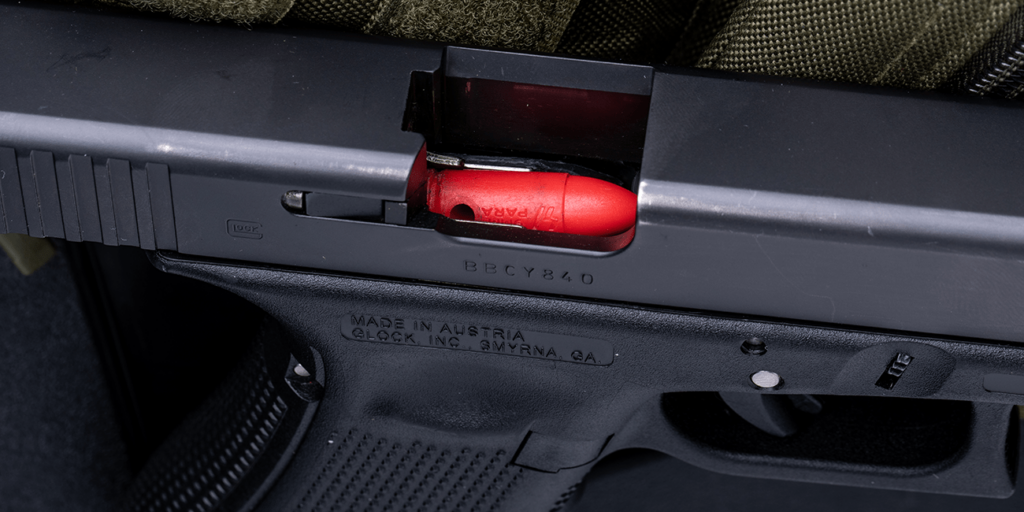

Dry Fire Training Gear: The Basics
For basic practice to improve your trigger pull or reduce your flinch response, not a lot of gear is really needed. The most basic dry fire training exercise is to simply point your unloaded firearm in a safe direction and pull the trigger as smoothly as possible, minimizing any movement of the firearm. For occasional practice, this drill really doesn’t require anything more than a firearm to practice with.
For serious trainers, though, this simple drill can put some pretty significant wear on your firearm, especially on the firing pin. Repeatedly letting the firing pin or striker down on an empty chamber can put a lot of stress on it.
In older firearms and some rimfire models, even just a few repetitions can cause damage. Most modern centerfire guns, on the other hand, can handle thousands or tens of thousands of reps before showing signs of stress. For those with a frequent training schedule though, tens of thousands of dry fire reps can be done in less than a year.
ATTENTION: Whenever you practice with firearms, it is crucial that you maintain a safe, attentive environment, even when dry firing. Don’t go mixing snap caps up with real cartridges. Always double check that your chamber and magazines are clear of live rounds before you practice. By making it a habit, you greatly reduce the risk of a negligent discharge.
With that said, let’s take a closer look at a few products that help you get the most from practicing in a safe environment.
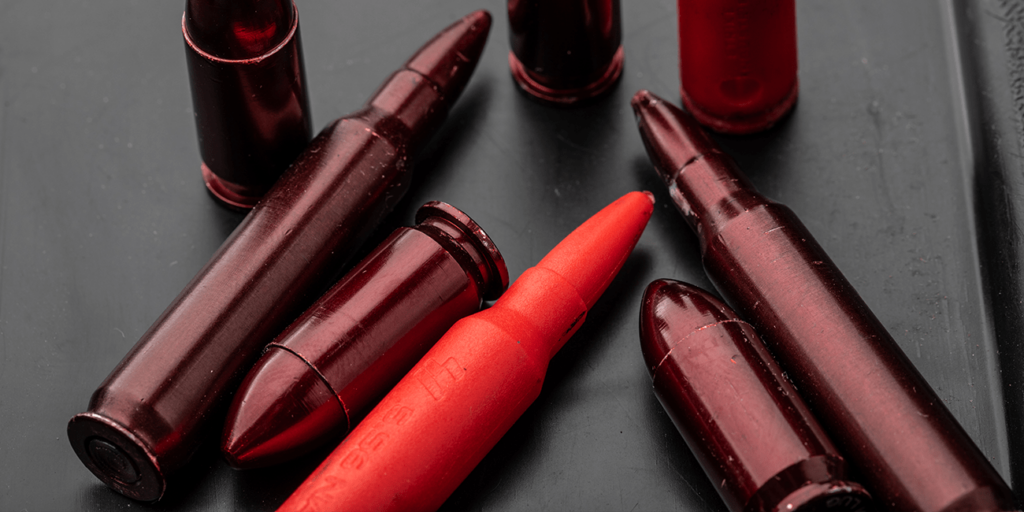
Snap Caps
For that reason and a few others besides, we recommend snap caps if you’re looking to get serious with your training. Snap caps take the place of traditional ammunition for dry fire, cushioning the firing pin somewhat to avoid unnecessary wear and stress.
They’re beneficial for other reasons, too. Reloading drills are a great example; if you want to practice mag changes with a handgun but prefer to rack the slide rather than use the slide release after slapping in a fresh mag, snap caps are the only way to do it. Without them, the empty mag would keep the slide locked to the rear unless you also depressed the slide release manually, which would largely defeat the purpose of the exercise.
Shop All In Stock Snap Caps Buy Now
Firearms that don’t use detachable magazines, such as revolvers and shotguns, face a similar issue. How do you practice loading a round into the firearm while keeping it empty of live ammunition? Snap caps are basically the only answer unless you happen to handload and can whip yourself up a few inert rounds.
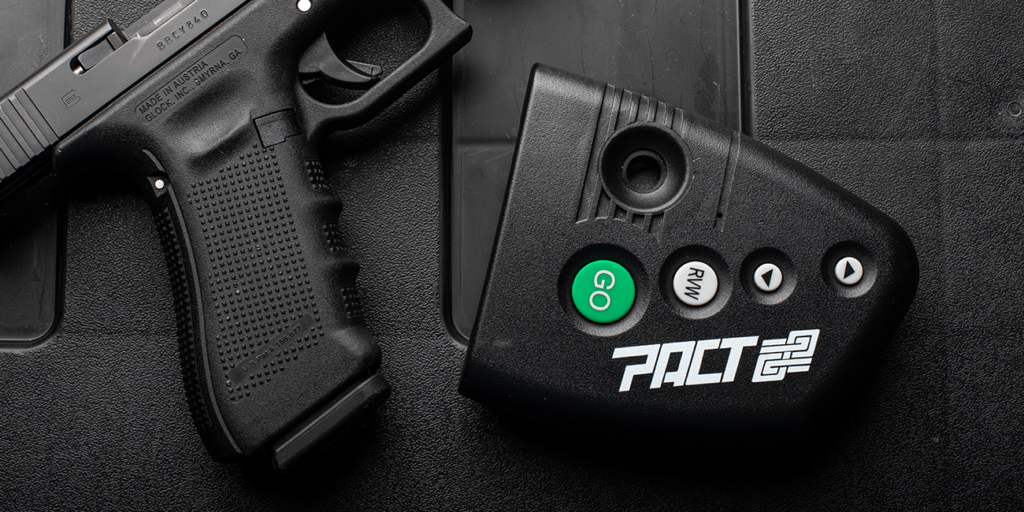
Shot Timers
Another common dry fire drill is drawing a handgun from a holster. This is an easy one to practice because it doesn’t necessarily require anything more than a handgun and a holster to pull it from. It’s also one of the most crucial skills to master if you carry a firearm concealed or in the line of duty.
When starting out, you’ll want to go slow, focusing on the separate stages of drawing your firearm: acquiring a proper grip, aligning your sights on the target, and pulling the trigger. It’s important to develop good habits from the start, as it will save you time and trouble later.
Once you get the basics down, you can start working on improving your draw time. To do that effectively, you’ll want a shot timer.
PACT Club Timer III Shot Timer Buy Now
A shot timer is a fairly specialized piece of equipment that basically combines a whistle, a stopwatch, and a microphone. It can be used for either live or dry fire, but we’ll primarily be looking at it as a dry fire training tool. In that role, the shot detection feature doesn’t really get used, since the click produced by dry fire isn’t loud enough to reliably register on the microphone.
During dry fire, a shot timer is used to provide a random start time and to mark a par time. The random start feature is important; the time you take to register the buzzer and respond to it is as much a part of your draw as the time you take to pull your firearm from its holster.
Should you ever need to draw your firearm to respond to a threat, it won’t be pre-planned—it will be random. Your training should reflect this as closely as possible. A shot timer simulates this by emitting a starting buzzer at a random interval after being activated.
The par time feature works in concert with the random start buzzer to help you track your progress and measure how fast you are. With most shot timers, the par time feature is configurable, letting you set a specific amount of time that the second ‘par time’ buzzer will sound after the initial starting buzzer.
This gives you a concrete indicator of how long it took you to respond to the start buzzer; if you acquired a sight picture and got a shot off before the par time buzzer, then your draw time is less than the par time. Most users start at around 5 seconds and work their way towards a shorter and shorter par time. Some of the best, especially those who carry appendix, can manage a par time of under a second.

Dry Fire Training Gear: Advanced
If you want to move beyond the basic drills, you’ll need more than just basic gear. Snap caps and shot timers can take you pretty far, but if you want more sophisticated or more fun training at home, here are a few accessories that can help.
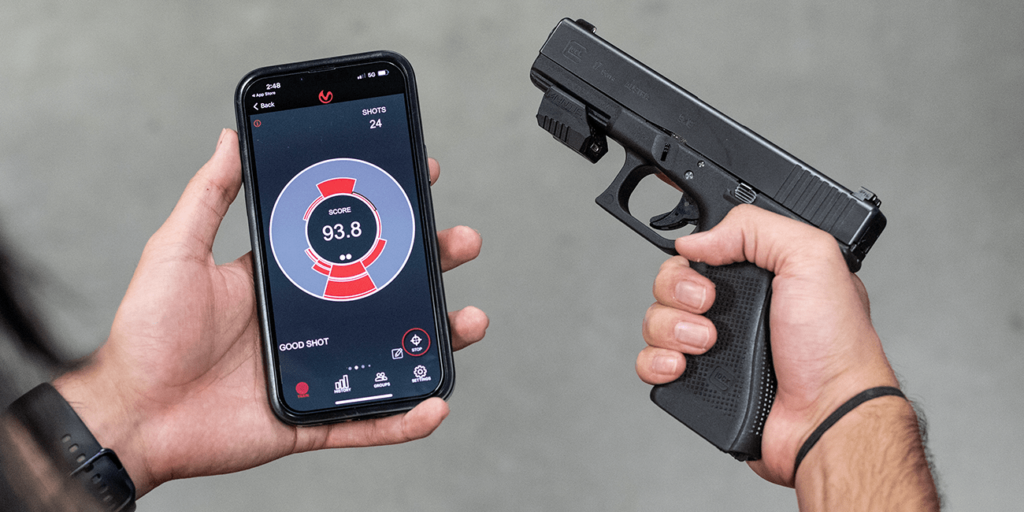
Mantis X10 Trainer
The Mantis X10 is one of the most comprehensive tools available for improving your shooting skills. Its core function is to track the movement of your firearm before, during, and after the shot, whether shooting live fire or dry. This movement data is then recorded and graphed, letting you know exactly what’s happening with every shot.
Is your muzzle dipping? The X10 can tell you when, what direction, and how much, and sometimes even give you suggestions for how to correct it.
This is huge for improving fundamentals like your trigger press. It can be hard to tell exactly what’s happening during the press on your own; sure, you can see if the sights wobble, but are they wobbling left then right, or right then left? Is the gun really wobbling side-to-side or are you torquing it, thereby misaligning the sights? The two issues appear similar when you’re staring down the sights but can have different causes and solutions.
Shop All In Stock Mantis Trainers Buy Now
The Mantis X10 takes the guesswork out of dry fire training and gives you precise, accurate feedback. It even has tools to try and diagnose any factors in your shooting that could be hindering performance. Since it works with live fire or dry fire, it’s the perfect tool to help you gauge how much the improvements you make during dry fire transfer over to the real deal.
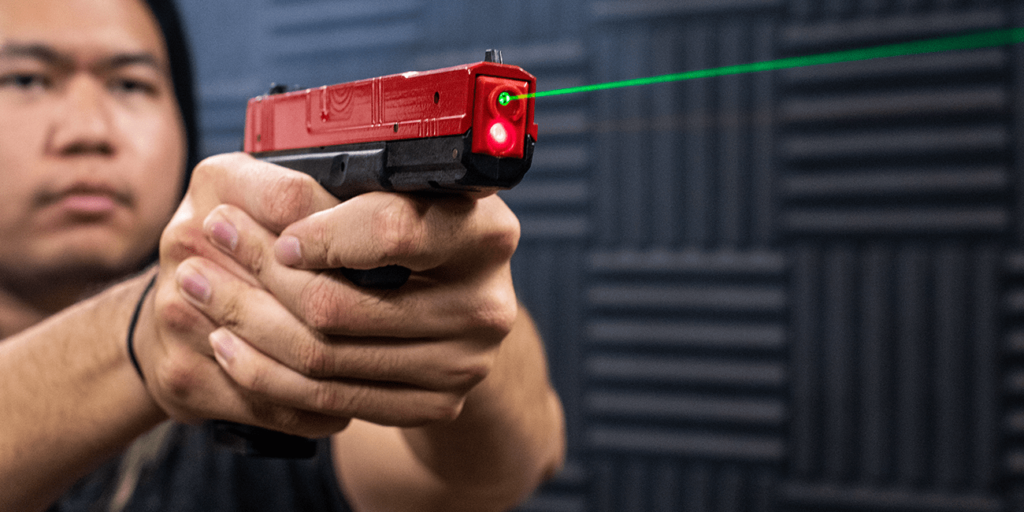
Laser Training Tools
There are a lot of laser-based training aids out there and they all boil down to essentially the same thing; some form of laser cartridge for your firearm, a specialized target or targets, and a phone app to detect shots. The cartridge emits a short laser burst when you pull the trigger, which shows up on the target and is captured by the camera of your phone.
This system gives you instant feedback on your shots, letting you know where you would have hit during live fire. Of course, since it’s a laser, it can’t account for factors like drop or wind drift, but it’s good enough for short-range training with a handgun or carbine.
If you want to practice at distances greater than 25 yards, though, there’s really no substitute for range time.
Like the Mantis X10, laser trainers improve your dry fire practice by giving you additional feedback. The app on your phone will record every shot fired, letting you view your “group” after the drill. Some of them provide suggestions to improve your shooting based on your performance and trends.
They also offer some improvement over a standard shot timer for practicing your draw. Not only do they provide the same start buzzer and par time features as a shot timer, but they can also record the time between the buzzer going off and the laser hitting the target, offering a more precise measurement of your draw time. Being able to see the point of impact is a considerable benefit, too; after all, the fastest draw in the world won’t count for much if you miss your target.
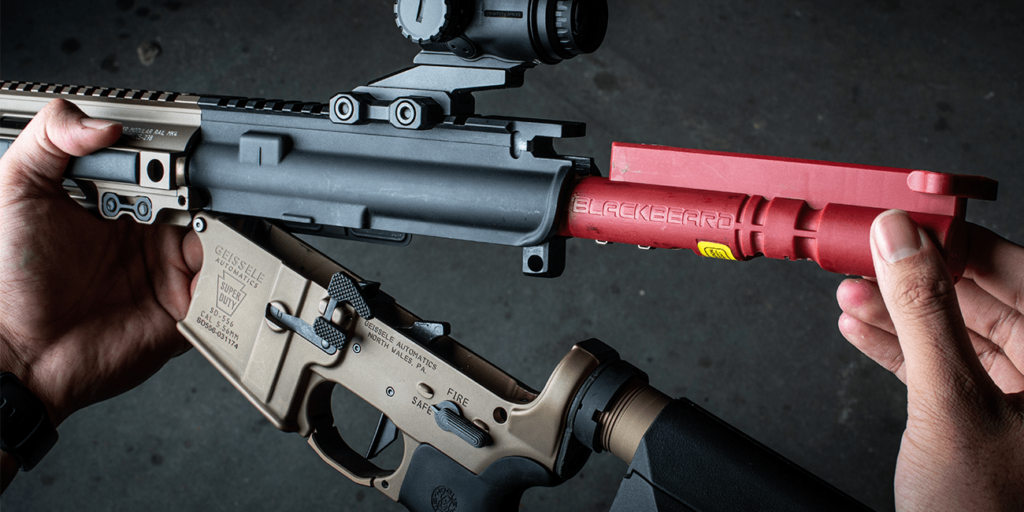
Mantis Blackbeard
Most dry fire drills and gear focus on handguns. Part of the reason is that handguns take a lot more practice to use effectively, even at close quarters. But, with the AR-15 rapidly becoming one of the most common home defense firearms in the country, there’s good reason to be practicing your close-quarters marksmanship with your carbine, too.
Enter the Mantis Blackbeard training system. One of the biggest drawbacks to dry fire is the need to charge your firearm after every shot. Unless you are practicing with a double-action-only pistol, practicing double-taps or failure-to-stop drills is impossible. The Blackbeard solves this problem entirely.
The Blackbeard replaces your rifle’s BCG, magazine, and charging handle with a unit that resets your trigger as fast as you can pull it. There’s an option to add a red, green, or infrared laser too, depending on which model you purchase. This allows you to train with your actual rifle, practicing your actual trigger pull, but still run drills for rapid fire or follow-up shots.
Shop All In Stock Mantis Blackbeard Buy Now
The laser option offers the same benefits for an AR-15 as it does for a handgun, although if you want to take full advantage, you’ll still need a few accessories, like the phone app and targets.
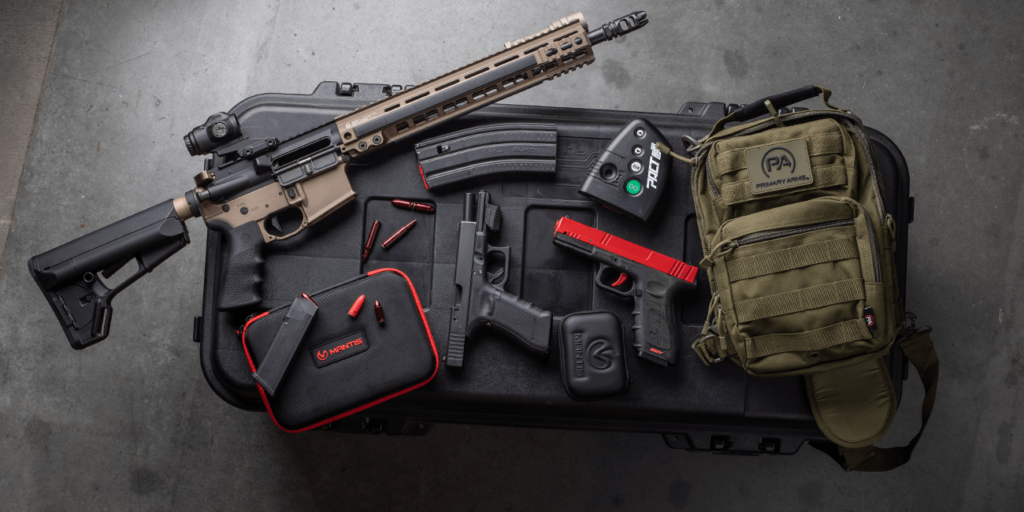
Dry Fire Training: Summary
With ammo prices being what they are, dry fire training has never looked more attractive. Adding a shot timer or laser trainer lets you make the most of your trigger time and get better, faster. If you’re serious about improving your performance on the range, improving your practice is the place to start.
